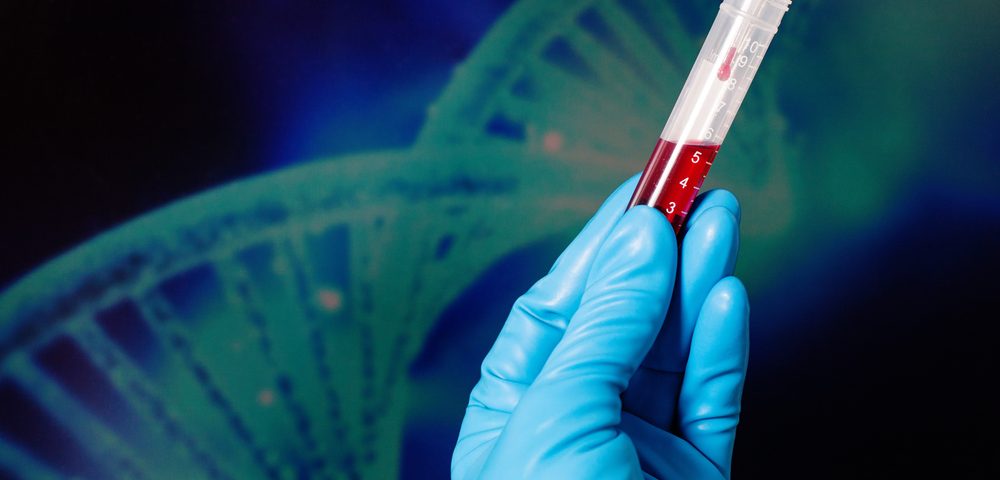Patients with advanced non-small cell lung cancer (NSCLC) may be more effectively and safely tested for clinically relevant mutations — used to help guide treatment course — with a blood-based test rather than a tissue biopsy, the current standard for detecting such mutations, a study published in the journal of Clinical Cancer Research suggests.
The study, “Detection of therapeutically targetable driver and resistance mutations in lung cancer patients by next generation sequencing of cell-free circulating tumor DNA,” reveals that cell-free circulating tumor DNA (ctDNA) in the blood can be used to identify mutations usually found through tissue biopsies. Because this test is more feasible than biopsies, serial blood samples may also be used to follow disease progression, identifying new treatment-resistant mutations that appear as the disease progresses, and that may influence patient care.
“This represents a bit of a paradigm shift,” Erica L. Carpenter, PhD, MBA, director of the Circulating Tumor Material Laboratory, research assistant professor at the Perelman School of Medicine at the University of Pennsylvania, and the study’s senior author, said in a press release. “The tissue biopsy sequencing result has been considered the gold standard against which one compares the ctDNA result.
“Our work suggests that one can act on a ctDNA result, even in the absence of the so-called gold standard, and get a clinical response in these patients. It also offers the advantage of testing without discomfort to the patient and possible risks associated with invasive biopsies,” Carpenter said.
Researchers enrolled patients with advanced NSCLC, treated at the university’s Abramson Cancer Center, who had their blood samples sent for ctDNA testing as part of their clinical care. The genomic analysis was performed with the 70-gene Guardant360 panel at Guardant Health in California.
Among the 120 enrolled patients, 50 had available tissue biopsies, which were analyzed using a 47-gene panel and compared with the results of the ctDNA testing.
Among the detected mutations, 41 were detected by both methods, and 24 and 19 targetable EGFR mutations — which are driver mutations of lung disease — were detected by tissue samples and ctDNA samples alone, respectively.
Importantly, the researchers found that when both samples were collected at the same time, the two tests had nearly 100 percent concordance. But as time between the collection of the tissue sample and the ctDNA sample increased, discordance between the tests also increased. This suggested that the blood test was able to detect new mutations that had evolved for the cancer to resist treatment, which were not detectable at the initial tissue biopsies.
Notably, the researchers analyzed serial ctDNAs done in six patients, as part of disease surveillance. These helped them identify driver or resistance mutations, including EGFR and ALK mutations, that could be targeted with existing therapies and so help guide clinical decision-making. This suggests that blood-based analysis of ctDNA can yield results with high clinical relevance in patients with NSCLC.
Researchers believe the next step is to evaluate ctDNA samples at diagnosis to see how they compare with biopsy samples, and in the context of metatastic NSCLC that is genetically highly distinct.
“The ever-expanding number of targeted therapies for lung cancer patients has been accompanied by a need for diagnostics with real-time detection of therapeutically targetable mutations,” said Corey J. Langer, MD, a professor of Hematology/Oncology and director of the Thoracic Oncology Program in Penn’s Abramson Cancer Center, and a treating physician on the trial. “More and more, liquid biopsies are proving to help fill this need. While tissue samples will likely remain a major part of the initial diagnostic process, this non-invasive approach appears to be another powerful tool in our toolbox to help determine the best course of treatment for lung cancer patients.”


